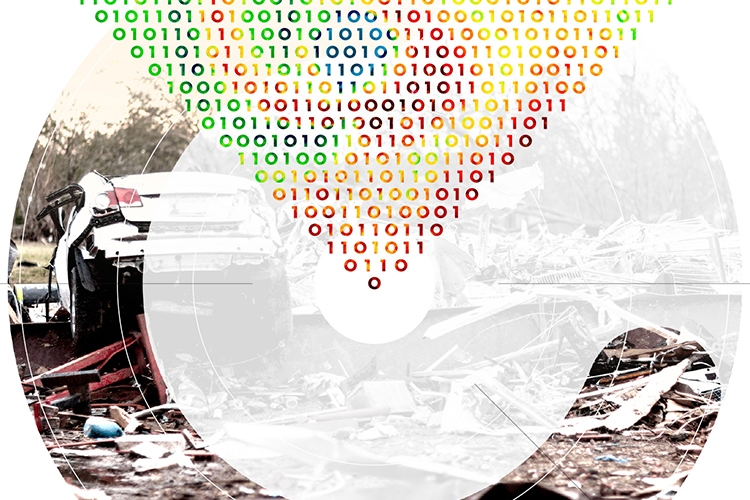Technology has already transformed the claims industry in many ways, and there is great promise for the enhancements future innovations will offer in terms of performance and outcomes. But technology alone cannot meet the needs of clients and consumers; the broader goal should be full end-to-end integration, with the right tools, data and talent coming together to support people in their time of need. In this blog, we will explore some of the principles behind effective technology adoption in claims and highlight a few practical ways that technology innovations support the important work we do.
Communication, automation and innovation
As we look ahead to the second half of 2023, we remain focused on three key aspects of our industry’s technology story:
- Communication – In a people first approach, customized user experiences matter. Communication continues to transform customer service, build meaningful interactions, and influence how people engage throughout the claims process. Individuals are demanding full-service, instantaneous options, including flexible, multi-channel flow through talk, text and chat.
- Automation – The automation of processes and digitization of tools is occurring in ways large and small as we stay tech forward. Even automating segments of the claims process — like eligibility verification, valuation and validation — and integrating rules-based decisioning can take some burden off of claims professionals and hasten the resolution process, improving the user experience for adjusters and claimants alike.
- Innovation – Forward-thinking organizations are data driven, leveraging the latest advances in technology strategically, but also securely. Benchmarking data has become more sophisticated, giving organizations added direction in identifying ways to proactively optimize their performance. By harnessing the power of structured and unstructured data, they can optimize and prescribe decisions to yield better value and outcomes. Data and next generation artificial intelligence (AI) can combine to simplify complex processes, and quality initiatives can be built for real-time action instead of retrospective review.
Positioning for the best possible outcomes
Insurers and employers must carefully balance the efficiencies of new technologies with the risk of losing the personal touch. Customer experiences cannot be viewed as one-size-fits-all. Not everyone wants to go to a website to resolve a claim. Some want to speak with another human, others wish to email, and others the ability to send images via an app or to use text and online chat features. Providing options for technology utilization and communication is a win-win; it not only streamlines processes, but also promotes loyalty. Treating people how they want to be treated helps insurers retain their customers and employers satisfy the needs of the workforce.
Technology, despite its many benefits, is not a substitution for personal interaction. Based on Sedgwick’s people first, tech forward, data driven philosophy, we believe the best way to employ technology in claims is to leverage its capabilities to perform rote tasks. This approach gives claims professionals more opportunities to deliver empathy, forge genuine human connection and engagement, and make a meaningful difference. Our new Sidekick application, which leverages generative AI to supercharge how our people perform their daily work, is designed to do just that. Technology can help to ensure that the right resources are applied to assist individuals at the right time. This allows claims professionals to do what they do best: engage customers, solve problems, alleviate complexity, and restore peace of mind.
Practical applications
Here are some examples of how technology and data optimization add value to our processes:
- Individualized care – Providing personal, compassionate care after an injury or illness is crucial, and technology enhances our ability to do so. Along with automating basic functions like eligibility, AI can serve as the backbone for predictive models developed to identify when an individual might benefit from a clinical intervention, such as a call from a nurse case manager or a review of their prescriptions.
- Low complexity property losses – We’ve developed a tool for efficiently processing low complexity residential damage claims by employing automation to adjudicate losses. Based on the extent of damage reported, homeowners may receive automated referrals to repair and restoration services from our contractor network, as well as to our temporary housing team for further assistance.
- Enhancing the employee experience – In this tight labor market, it’s vital to provide meaningful work experiences, with an eye toward attracting and retaining highly skilled people. By allowing automation technology to do some of the heavy lifting, especially on low value and low severity claims, we’re able to remove mundane, repetitive tasks from our colleagues’ workloads and enrich their jobs with opportunities to work on more engaging and challenging things.
- Self-service – Automation technology gives customers the power to go online and manage portions of the claims process themselves. For example, if a policyholder incurs roof damage due to a storm, they can go to their insurer’s website and provide data on the loss, including the location and date of the event. Automation enables us to verify their policy and coverage and drill down in real-time into the weather conditions in that area on that date. With this information, customers can get their claims resolved faster and remain updated every step of the way.
To benefit all stakeholders in the claims process, we continually look for ways to target pain points, communicate with people the way they want, identify areas of risk and opportunity, find smart ways to automate processes, and empower skilled adjusters to optimize the value of promising and innovative technologies. We believe this is the right approach for true transformation and value for our industry and clients.
> Learn more — check out an expanded version of this article in issue 21 of Sedgwick’s digital magazine edge, and read more about our people first, tech forward and data driven approach on our website and in our digital experience brochure

